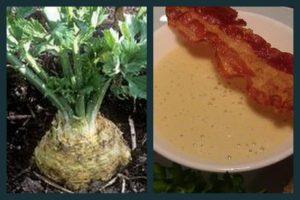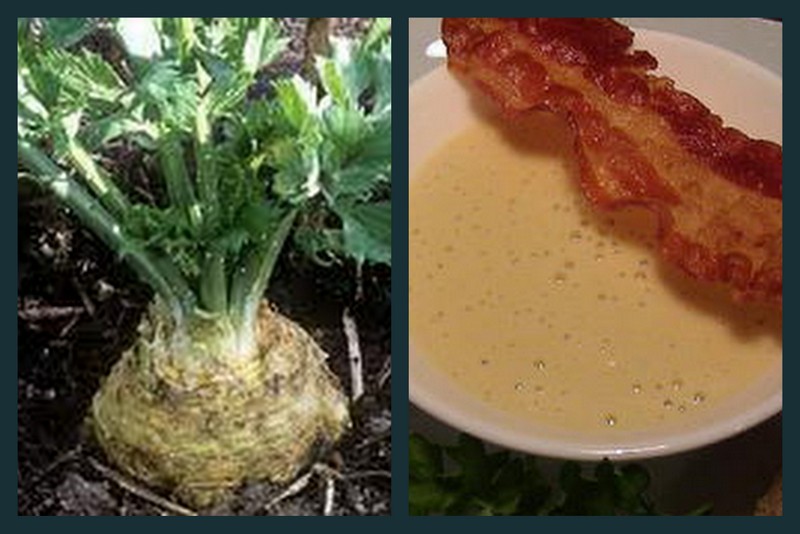
First off let’s differentiate between “Celeriac” and “Celery”. Celeriac is the knobbly root vegetable of the species Apium Graviolens and Celery is the name given to the stalks of the same species. Now apparently (not having the greenest of fingers) some varieties are grown for their knobbly roots and some for the stalks.
I personally associate Celery with a series of advertisements for “Philadelphia” cream cheese that featured the white goo spread on stringy celery sticks and Barbie doll women coyly purring “It is my birthday” as if a bit of cream cheese on a watery vegetable stick was as much excitement as they were allowed. I am (you might have guessed) not a fan of celery but celeriac…that is a whole different ball game.
Just as celery suggests denial and austerity celeriac suggests excess, enjoyment and seduction. Yes I know, seduction by celeriac seems a little far fetched but persevere… Celeriac adds luscious creaminess, a hint of something slightly aniseedy and if generations of Romanians are to believed, it reaches the parts other root vegetables can’t. To benefit most from its legendary properties Romanians suggest eating it raw and certainly combined with apples, walnuts and carrots and a little mayonnaise in the style of a French remoulade – the Romanian “cruditati” salad is winsome.
But with a little truffle oil added celeriac becomes a truly magical affair – the creamy celeriac giving great texture and the truffle oil giving an olfactory kick.
No special equipment is needed for this recipe. I try not to overboil the celeriac but it does need to be quite soft for this soup. If you feel very cheffy you can strain it through a sieve or a “chinois” – I probably should but life is short and the texture is pretty heavenly anyway. I do always make this soup with real stock – if you are going to invest in truffle oil then it deserves a bit of body.
Continue reading “Truffled Celeriac velouté with crispy pancetta”










